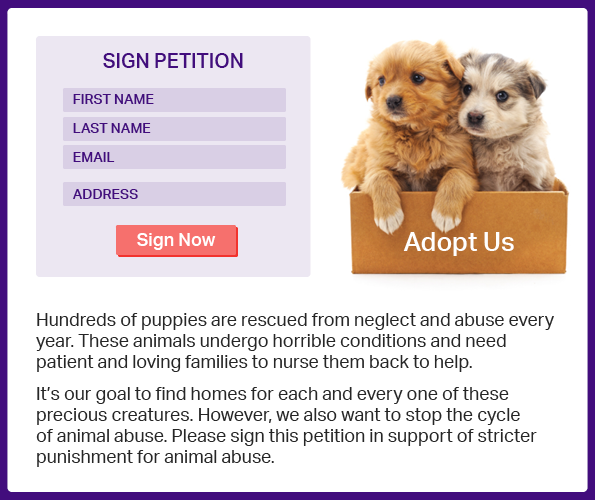Grassroots nonprofit marketing campaigns are a valuable opportunity for nonprofit organizations to raise awareness about their purpose.
The term “grassroots” refers to the foundation of a movement, beginning with small groups of individuals who have a connection to the cause. Grassroots marketing campaigns allow you to spread the word about opportunities to support your nonprofit.
To start your grassroots marketing campaign, we’ll review four outreach strategies and provide examples of them in action.
 Action alerts are one way to let supporters know about opportunities and how to get involved. They can be set to be sent off through your nonprofit’s advocacy software solution. Set up your action alerts to trigger an email and publish posts to various social media sites simultaneously.
Action alerts are one way to let supporters know about opportunities and how to get involved. They can be set to be sent off through your nonprofit’s advocacy software solution. Set up your action alerts to trigger an email and publish posts to various social media sites simultaneously.
 Salud America is an advocacy-oriented organization that fights for the rights of Latino children and families to rightfully live, learn, work, and play. They support policy, system, and environmental changes to ensure these basic rights.
Advocacy software made it easy for professionals at Salud America to create petitions and tell their supporters about opportunities for support with action alerts.
Communication director Cliff Despres states, “Creating petitions, sign-up forms, and even just regular emails is really easy… There are a lot of bells and whistles you are able to apply to your actions making them more interesting and attractive.”
Salud America continues to advocate for important social issues through their targeted actions and action alerts. Making it easy to leverage digital advocacy helps organizations allocate additional time back toward fulfilling their purpose.
Salud America is an advocacy-oriented organization that fights for the rights of Latino children and families to rightfully live, learn, work, and play. They support policy, system, and environmental changes to ensure these basic rights.
Advocacy software made it easy for professionals at Salud America to create petitions and tell their supporters about opportunities for support with action alerts.
Communication director Cliff Despres states, “Creating petitions, sign-up forms, and even just regular emails is really easy… There are a lot of bells and whistles you are able to apply to your actions making them more interesting and attractive.”
Salud America continues to advocate for important social issues through their targeted actions and action alerts. Making it easy to leverage digital advocacy helps organizations allocate additional time back toward fulfilling their purpose.
![The image is an address to supporters beginning with “Dear [First Name],” indicating nonprofits could populate the first name brackets with each of their supporters’ names.](data:image/gif;base64,R0lGODlhAQABAAAAACH5BAEKAAEALAAAAAABAAEAAAICTAEAOw==) Grassroots nonprofit marketing campaigns rely on dedicated supporters. Show them they matter by addressing them individually and providing branded resources.
Grassroots nonprofit marketing campaigns rely on dedicated supporters. Show them they matter by addressing them individually and providing branded resources.
 Faith in Texas is an organization that supports civic leadership movements in faith communities for economic and racial justice. They work with multiple faith groups to create a network of voices fighting for justice in various communities.
Faith in Texas leveraged the templates available through their advocacy software, then made adjustments according to their needs. These adjustments ensured their content was branded to the organization and the communications were as personalized as possible to engage supporters.
Faith in Texas is an organization that supports civic leadership movements in faith communities for economic and racial justice. They work with multiple faith groups to create a network of voices fighting for justice in various communities.
Faith in Texas leveraged the templates available through their advocacy software, then made adjustments according to their needs. These adjustments ensured their content was branded to the organization and the communications were as personalized as possible to engage supporters.
 Our Clubhouse is a unique organization that focuses on providing support for individuals whose lives have been touched by cancer.
At their annual event Over the Edge, supporters rappel down the side of a skyscraper. Supporters of Our Clubhouse earn the privilege of rappelling by being part of the event’s peer-to-peer fundraising campaign, encouraging individuals to join not only to raise money for a good cause but also to participate in a memorable event.
Our Clubhouse is a unique organization that focuses on providing support for individuals whose lives have been touched by cancer.
At their annual event Over the Edge, supporters rappel down the side of a skyscraper. Supporters of Our Clubhouse earn the privilege of rappelling by being part of the event’s peer-to-peer fundraising campaign, encouraging individuals to join not only to raise money for a good cause but also to participate in a memorable event.
 The Campaign for Tobacco-Free Kids (CTFK) fights to protect children from the harmful effects of tobacco and, ultimately, save lives. They advocate for stopping tobacco sales from popular retailers and tighter legislation from government officials.
CTFK employs various grassroots nonprofit marketing campaigns to support their purpose. They market their multiple targeted actions through various channels and track the successes of those campaigns for the future.
As CTFK leverages advocacy software for newsletters, action alerts, social posts, and fundraising appeals, their supporters continue to donate and get involved with other campaigns that encourage a tobacco-free world.
The Campaign for Tobacco-Free Kids (CTFK) fights to protect children from the harmful effects of tobacco and, ultimately, save lives. They advocate for stopping tobacco sales from popular retailers and tighter legislation from government officials.
CTFK employs various grassroots nonprofit marketing campaigns to support their purpose. They market their multiple targeted actions through various channels and track the successes of those campaigns for the future.
As CTFK leverages advocacy software for newsletters, action alerts, social posts, and fundraising appeals, their supporters continue to donate and get involved with other campaigns that encourage a tobacco-free world.
Grassroots nonprofit marketing campaign strategy #1: Action alerts
When planning opportunities for supporters to get involved with your organization, you’ll need an efficient way to let them know and encourage them to take action. This is best done with marketing automation features. Let’s say your organization has just launched an online petition. You customized the design of the petition to include a header that reflects your organization’s branding. You also adjusted the form fields to collect the most pertinent and relevant information from supporters. In the end, your petition may look something like this: Action alerts are one way to let supporters know about opportunities and how to get involved. They can be set to be sent off through your nonprofit’s advocacy software solution. Set up your action alerts to trigger an email and publish posts to various social media sites simultaneously.
Action alerts are one way to let supporters know about opportunities and how to get involved. They can be set to be sent off through your nonprofit’s advocacy software solution. Set up your action alerts to trigger an email and publish posts to various social media sites simultaneously.
Real-life example: Salud America
Grassroots nonprofit marketing campaign strategy #2: Customized and personalized content
When using software to design your marketing materials, look for software that will provide all of the functionality your nonprofit needs to truly make your content your own. In particular, there are two ways you should customize your content:Branding
Branding is key for your organization’s marketing materials. For instance, if you’re creating a click-to-call advocacy campaign, you should use your logo, imagery, and colors to ensure consistency with your website. Maintaining consistent visual branding indicates to supporters that they are still working with your organization, even if they’re redirected to a different website. Be sure to follow event branding best practices, as well, for the sake of consistency and recognition.Personalization
When you send content directly to your supporters, make sure you’re personally addressing each individual you reach out to. When you read an email, are you more likely to pay attention when it begins with “To whom it may concern,” or when it addresses you by your name? Make sure you have the ability to auto-populate the preferred name of each donor in the introduction of the message. Here’s an example of this strategy:![The image is an address to supporters beginning with “Dear [First Name],” indicating nonprofits could populate the first name brackets with each of their supporters’ names.](https://www.bonterratech.com/wp-content/uploads/2024/11/sample-email.png) Grassroots nonprofit marketing campaigns rely on dedicated supporters. Show them they matter by addressing them individually and providing branded resources.
Grassroots nonprofit marketing campaigns rely on dedicated supporters. Show them they matter by addressing them individually and providing branded resources.
Real-life example: Faith in Texas
Grassroots nonprofit marketing campaign strategy #3: Supporter connections
As a nonprofit professional, you know building relationships is the foundation for improving your donor retention rates and ensuring supporter engagement. When we talk about supporter connections, however, grassroots nonprofit marketing campaigns have a secondary goal: connections between supporters. When supporters feel connected to one another, they will form a community around your purpose. Some marketing campaign strategies your nonprofit can employ to encourage these connections include:- Peer-to-peer fundraising. Peer-to-peer fundraising encourages supporters to connect with one another and leverage their external networks to collect donations.
- Sharable content via social media. When you post on your blog, be sure to also share that content on social media and encourage your supporters to do the same. This will help get the word out about new opportunities at your organization.
- Advocacy events. Encourage your supporters to physically come together at your nonprofit’s advocacy events. Bringing supporters together will encourage them to get to know one another and form connections.
Real-life example: Our Clubhouse
Grassroots nonprofit marketing campaign strategy #4: Data analysis
As your nonprofit implements grassroots nonprofit marketing strategies, you’ll likely collect a major influx of data from your supporters. When you keep an eye on your various marketing metrics and key performance indicators, you can make better, more informed decisions for the future. Look for easy yet detailed ways to track your data. While you could regularly download spreadsheets, it’s a lot easier to check these metrics with a comprehensive dashboard. Your data dashboard should show metrics from your grassroots nonprofit marketing campaign such as:- Effectiveness of different petitions
- Channels through which people found targeted actions
- Email open and click-through rates
- Number of supporters who messaged a legislator
- Number of new participants
Real-life example: Campaign for Tobacco-Free Kids
Launch your grassroots campaign
With the right fundraising software tools and the best strategies, your grassroots nonprofit marketing campaign will become increasingly effective as time goes on. Get the word out about your cause and how people can help!
Ready to Get Started?




